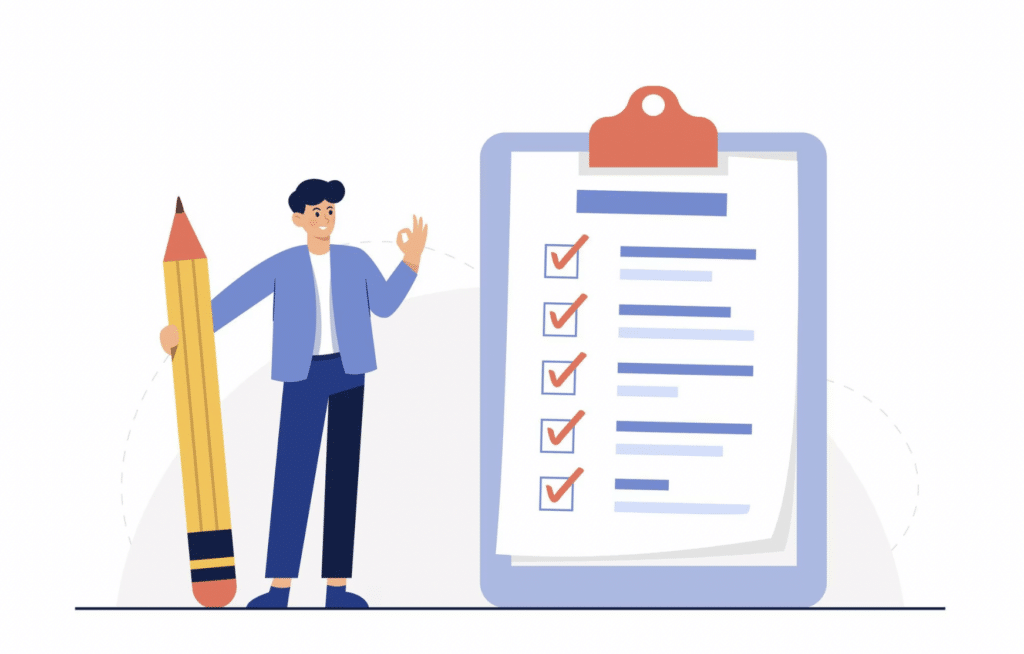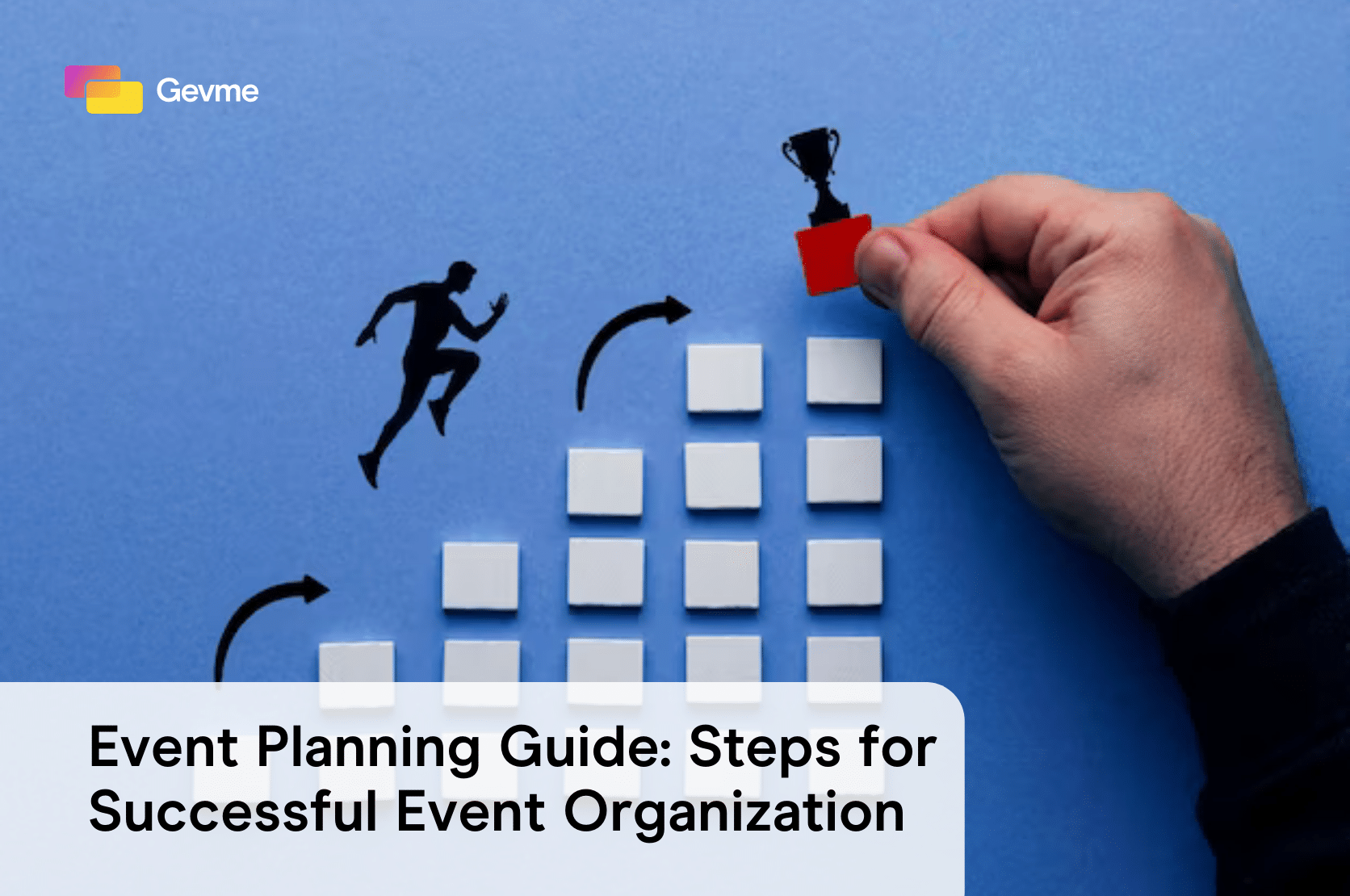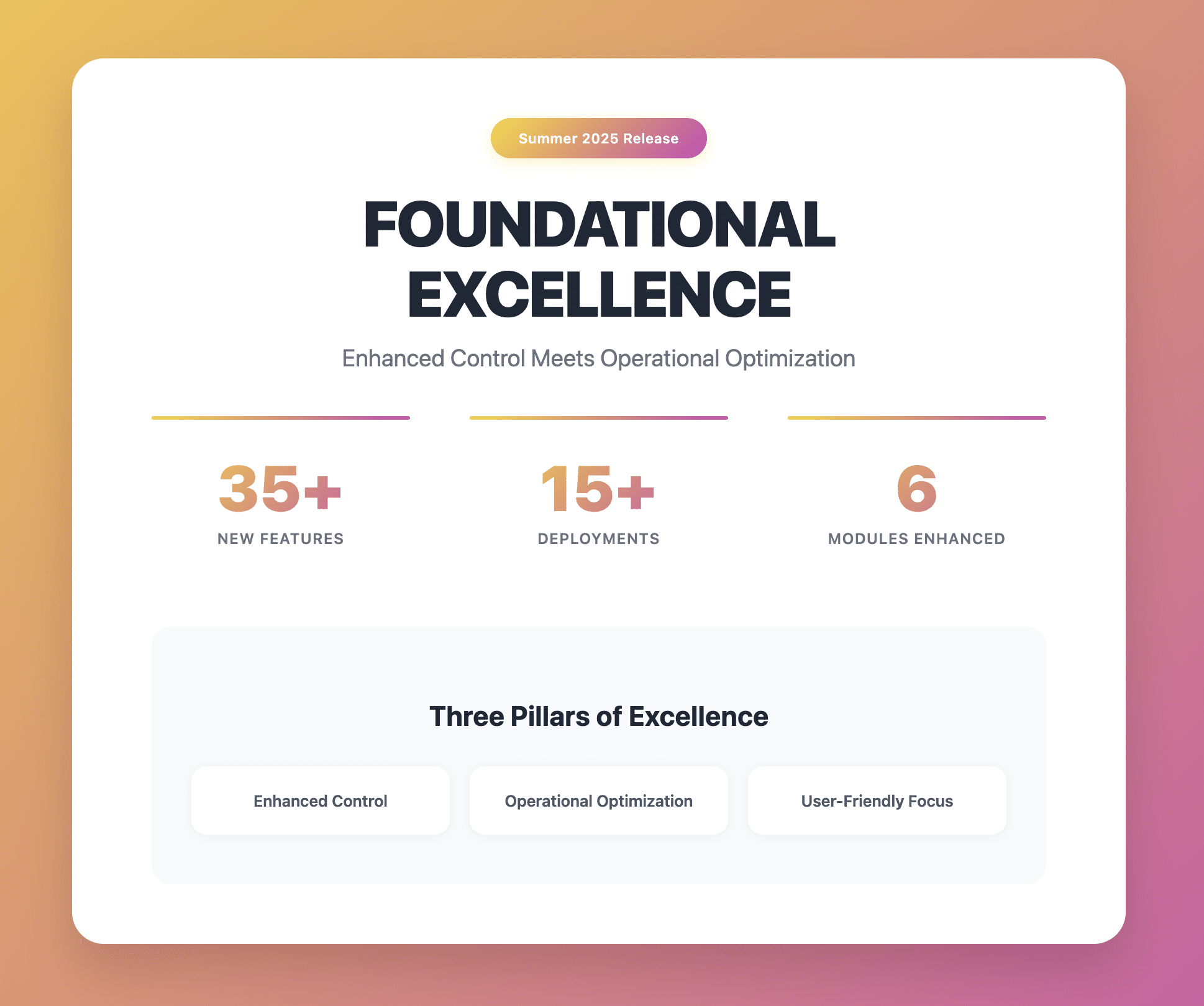Organizing a successful event is an intricate endeavour that demands thorough planning and careful execution. In the realm of corporate conferences and large-scale professional gatherings, the significance of detailed organization cannot be overstated. This event planning guide is designed to take you through the essential steps of turning an event idea into a resounding success. From the initial planning stages to the final moments of the event, each step is crucial in ensuring the overall success and impact of the occasion.
Let’s dive into this journey of event organization, highlighting the key stages and best practices that are instrumental in orchestrating successful professional events.

Defining the Event’s Purpose and Objectives
The first and foremost step in any event planning guide is to establish clear and detailed objectives:
- Clarifying the Event’s Goals: Begin by pinpointing the primary goals of the event. These could include objectives like fostering industry connections, educating attendees about new technologies, boosting sales, or increasing brand awareness. An in-depth understanding of these goals will inform and shape every aspect of the event planning process.
- Understanding the Target Audience: A thorough analysis of your target audience is essential. Consider factors such as their professional interests, industry challenges, and what they seek to gain from attending your event. Tailoring the event to meet these specific needs and interests is crucial for its success.
- Establishing Measurable Objectives: Set SMART (Specific, Measurable, Achievable, Relevant, Time-bound) objectives to quantify the event’s success. For example, these objectives could be quantified in terms of attendee numbers, engagement levels, social media reach, or post-event survey scores.
- Aligning with Organizational Goals: The event should seamlessly align with your organization’s broader goals and objectives. This alignment is vital for reinforcing your brand’s message, strengthening your market position, or achieving specific business objectives.
- Creating a Vision for the Event: Develop a comprehensive vision that encapsulates your objectives and sets the tone for the entire event. This vision will guide decisions regarding theme, content, speakers, and the overall attendee experience.
- Determining Key Performance Indicators (KPIs): Clearly define KPIs to measure the event’s effectiveness. These could range from attendee satisfaction rates and the quality of leads generated to the level of engagement in networking sessions.
- Assessing Resource Availability: Conduct a thorough assessment of available resources, including budget constraints, personnel skills, technological requirements, and time frames. This assessment will help in setting realistic and attainable goals for your event.

Budgeting and Financial Planning
Effective budgeting and financial planning are essential in any event planning guide:
- Creating a Detailed Budget Plan: Begin with a comprehensive budget that accounts for all potential costs. This should include detailed categories for venue, catering, technology, guest speakers, marketing, and any other expenses. Being meticulous in this step helps prevent overspending.
- Allocating Funds Wisely: Allocate your budget according to the event’s priorities. Determine which aspects are most critical to the event’s success and allocate a higher percentage of the budget to those areas.
- Building in a Contingency Fund: Always include a contingency fund for unexpected expenses. This fund can cover anything from last-minute venue changes to unforeseen technological needs.
- Cost-effective Solutions and Negotiations: Look for ways to reduce costs without sacrificing quality. This could involve negotiating with vendors or finding creative, less expensive alternatives to traditional event elements.
- Monitoring Expenses Closely: Throughout the planning process, regularly review the budget. Keeping track of expenditures in real-time helps avoid overspending and allows for adjustments as needed.
- Seeking Sponsorships or Partnerships: Explore opportunities for sponsorships or partnerships. These can provide additional funding sources and potentially add significant value to your event.
- Post-Event Financial Review: After the event, conduct a detailed review of all expenses. This review is crucial for understanding the accuracy of your budgeting and for learning lessons for future events.
- Using Financial Management Tools: Leverage financial management tools or event management software to keep an accurate record of expenses and generate reports. These tools can greatly simplify the financial tracking process.

Selecting the Right Venue
Choosing the right venue is a critical step in this event planning guide:
- Assessing the Event Requirements: Thoroughly assess the space, layout, seating capacity, stage setup, and technical requirements such as sound, lighting, and projection needed for your event. Consider if breakout rooms or additional spaces for networking are required.
- Location and Accessibility: Evaluate the venue’s accessibility, including public transport options, parking facilities, and ease of access for differently-abled attendees. The venue’s geographical location can also impact attendee turnout, so consider its proximity to airports or train stations for out-of-town guests.
- Cost and Availability: Factor in the venue’s rental cost within your overall budget, looking for potential hidden costs like overtime charges or additional fees for technical equipment. Check for availability not just on the event day but also for setup and rehearsal days.
- Facilities and Amenities: Assess the in-house amenities, such as catering services, seating arrangements, technical equipment, and Wi-Fi capabilities. Check if the venue provides essentials like tables, chairs, and linens or if these need to be rented separately.
- Negotiating Terms with Venue Providers: Focus on negotiating key aspects such as deposit amounts, cancellation policies, flexibility in event dates, and possible inclusions like complimentary rooms or services. Ensure you understand all terms and conditions before signing a contract.
- Site Visits and Inspections: Use site visits to inspect the venue’s condition, understand the layout, visualize event setup, check for accessibility issues, and discuss logistical details with the venue staff. It’s also a good opportunity to discuss any customization or branding opportunities within the space.
- Compliance with Safety and Accessibility Standards: Verify that the venue complies with all safety regulations, including fire safety and emergency procedures. Check for accessibility features such as ramps, elevators, and accessible restrooms to accommodate all attendees.
Designing the Event Agenda
The agenda is the backbone of any event, guiding its overall flow and impact in this event planning guide:
- Establishing a Timeline: A well-structured timeline is vital, encompassing each segment’s duration and transitions. Allocate time judiciously, balancing keynote sessions, panel discussions, and other activities to maintain a dynamic pace.
- Diverse Content Planning: A mix of content formats caters to varied attendee interests. Incorporate educational sessions, interactive workshops, and expert panels. Ensure these sessions align with the event’s theme and objectives.
- Incorporating Breaks and Networking Opportunities: Thoughtfully placed breaks are essential. Schedule them to maximize relaxation and networking without disrupting the event’s momentum. These intervals are pivotal for attendee interaction and engagement.
- Guest Speaker Coordination: Collaborate closely with speakers, aligning their topics with the event’s goals. Discuss logistics like session length, Q&A sessions, and special requirements to ensure a cohesive integration into the agenda.
- Interactive and Engaging Sessions: Plan sessions that encourage attendee participation, such as Q&A segments, live polling, and interactive workshops. These elements boost engagement and enrich the event experience.
- Rehearsals and Technical Checks: Allocate time for rehearsals to iron out any technical or logistical issues. This preparation is key to ensuring all presentations and activities proceed without hitches.
- Flexibility for Last-Minute Changes: Build in flexibility to accommodate unexpected changes. This adaptability is crucial for addressing unforeseen circumstances that may arise during the event.
- Final Review and Confirmation: Conduct a thorough final review of the agenda. Ensure it flows logically, covers all key topics, and meets the event’s objectives. Confirm the agenda with all involved parties, including speakers, vendors, and event staff.

Marketing and Promotion Strategies
Developing a robust marketing and promotion strategy, as emphasized in this event planning guide, is essential to the success of your event:
- Identifying Target Audience: Deepen your understanding of the target audience by conducting market research. Analyze their preferences, online behaviour, and what motivates them to attend events. Use this data to create targeted marketing messages that resonate.
- Developing a Marketing Plan: Your marketing plan should be multi-faceted, incorporating various channels and tactics. Include a timeline that outlines key milestones, such as when to launch promotional campaigns and when to ramp up social media activity.
- Utilizing Digital Marketing: Optimize your website for event promotion and utilize SEO techniques to improve visibility. Use email marketing to send personalized invites and updates. Employ retargeting strategies to re-engage interested individuals.
- Creating Engaging Content: Develop a content strategy that tells the story of your event. This could include behind-the-scenes looks, speaker interviews, and testimonials from past events. Use a mix of mediums like videos, podcasts, and blogs.
- Leveraging Social Media: Implement a social media strategy that includes regular postings, engaging with users, and creating shareable content. Consider live-streaming portions of the event to widen your reach.
- Partnerships and Sponsorships: Identify potential partners and sponsors who share a common audience. Develop joint promotional campaigns that benefit all involved parties.
- Measuring Marketing Effectiveness: Regularly analyze metrics such as website traffic, social media engagement, and conversion rates. Use this data to fine-tune your approach.
- Early Bird and Incentives: Create a compelling early bird offer to encourage early sign-ups. Consider offering tiered pricing, with incentives increasing in value as the event approaches.
Vendor and Supplier Management
Effective vendor and supplier management is a linchpin in the success of any event, as outlined in this event planning guide:
- Identifying and Selecting Vendors: Start by mapping out all the services and products you need for the event. Research potential vendors thoroughly, considering their reputation, reliability, and past client reviews. Prioritize vendors who have experience in events similar to yours.
- Negotiating Contracts: When negotiating contracts, aim for terms that offer value and flexibility. Discuss specifics like delivery timelines, quantities, quality standards, and penalties for non-compliance. It’s important to have a clear understanding of each party’s obligations.
- Establishing Clear Communication: Effective communication is key to successful vendor management. Set up regular check-ins and updates. Ensure all expectations, from timelines to specific event details, are clearly communicated and understood.
- Quality Control: Within your event planning guide, emphasize the need to implement strict quality control measures. This could involve sampling products, inspecting services before the event, or setting performance benchmarks.
- Managing Logistics: Coordinate logistics down to the finest detail. This includes confirming delivery and setup times, ensuring proper equipment handling, and checking the compatibility of technical equipment.
- Building Strong Relationships: Develop strong relationships with your vendors. Show appreciation for their work and consider their long-term potential as partners for future events.
- Contingency Planning: Always have a Plan B. This means having a list of backup vendors and understanding their capabilities and availability should an emergency arise.

Onsite Execution and Management
The day of the event is critical, and effective onsite execution and management, as highlighted in this event planning guide, are key to its success:
- Final Venue Check: Begin with a detailed final check of the venue. Ensure that every aspect of the setup, from seating arrangements to technical equipment, is in perfect order. Address any last-minute issues promptly.
- Coordination with Team Members: Gather your team for a comprehensive pre-event meeting. This is the time to assign specific roles and responsibilities. Make sure that every team member is well-acquainted with the event’s schedule, objectives, and their part in achieving its success.
- Vendor and Supplier Coordination: A well-coordinated team effort extends to your vendors and suppliers. Ensure that all vendors arrive as scheduled and that their deliveries or services align precisely with the terms of your agreement.
- Managing Guest Check-in: Smooth and efficient guest check-in is essential for creating a positive first impression. Ensure that your check-in area is adequately staffed and equipped with the necessary technology to handle a potentially high volume of guests quickly and accurately.
- Overseeing Event Flow: As the event unfolds, keep a watchful eye on its flow. Ensure that sessions start and end on time and that transitions between different segments are seamless. Effective event flow contributes significantly to the overall attendee experience.
- Handling Unforeseen Challenges: Be prepared for unexpected challenges that may arise. Whether it’s a technical malfunction, a delay in a session, or unforeseen weather conditions for outdoor events, having contingency plans and a responsive team in place is crucial.
- Ensuring Guest Comfort: Attendees’ comfort plays a significant role in their overall satisfaction. Regularly check the status of facilities like restrooms, dining areas, and lounges. Ensure they are clean, well-stocked, and free of any issues. Address any guest queries or concerns swiftly and professionally.
- Post-Event Venue Clearance: After the event concludes, oversee the clearance and clean-up of the venue. Ensure that all equipment and materials are properly returned, and the venue is left in excellent condition, meeting your contractual obligations.
Post-Event Evaluation and Analysis
The final step in your event planning journey involves post-event evaluation and analysis:
- Feedback Collection: Gather feedback from attendees, team members, vendors, and sponsors. Utilize surveys, questionnaires, and one-on-one interviews to gain valuable insights into their experiences.
- Evaluate Goals and Objectives: Compare the event’s outcomes to the goals and objectives you initially set. Analyze whether these were met and, if not, what factors contributed to any deviations.
- Financial Review: Examine the event’s financial performance. Compare actual expenses to the budget and assess the return on investment. Identify areas where cost savings or revenue optimization can be achieved in the future.
- Vendor and Supplier Assessment: Review the performance of your vendors and suppliers. Assess their adherence to contractual terms, quality of service, and any issues encountered during the event.
- Team Debriefing: Hold a debriefing session with your event team. Encourage open discussions about what went well and areas that need improvement. This is an opportunity to learn from each event and refine your processes.
- Identify Successes and Challenges: Recognize and celebrate the successes of the event. Equally important, identify the challenges and issues that arose. Use these insights to enhance your event planning strategies.
- Data Analysis: Analyze data collected throughout the event, such as registration numbers, attendee demographics, and engagement metrics. Use this data to identify trends and areas for improvement.
- Documentation: Ensure all event-related documentation, from contracts to feedback forms, is properly organized and archived for future reference.
- Report and Action Plan: Prepare a comprehensive post-event report that summarizes the event’s performance, feedback received, and key findings. Based on this report, create an action plan for future events, outlining improvements and adjustments.

Conclusion
Organizing a successful event requires meticulous planning and execution, with each step playing a crucial role in achieving your objectives. From defining the event’s purpose and objectives to post-event evaluation and analysis, this step-by-step event planning guide provides a comprehensive roadmap for event organizers. By following best practices and embracing innovative event management solutions like Gevme, event planners can not only ensure the success of their current event but also refine their strategies for future endeavours. Remember, a well-organized event leaves a lasting impact, fosters connections, and reinforces your organization’s goals and brand message.








